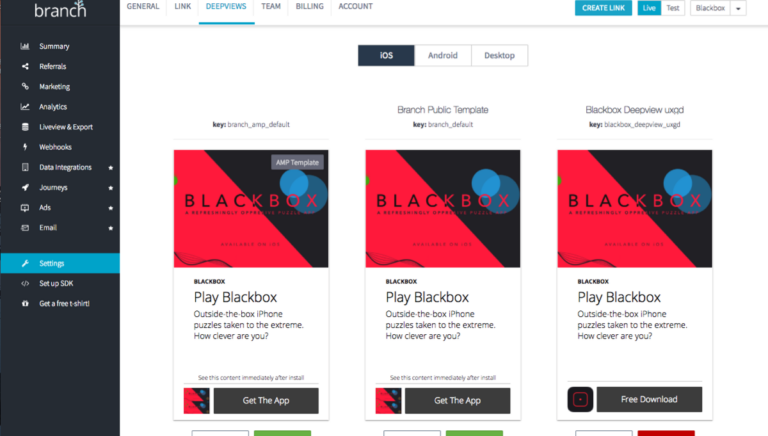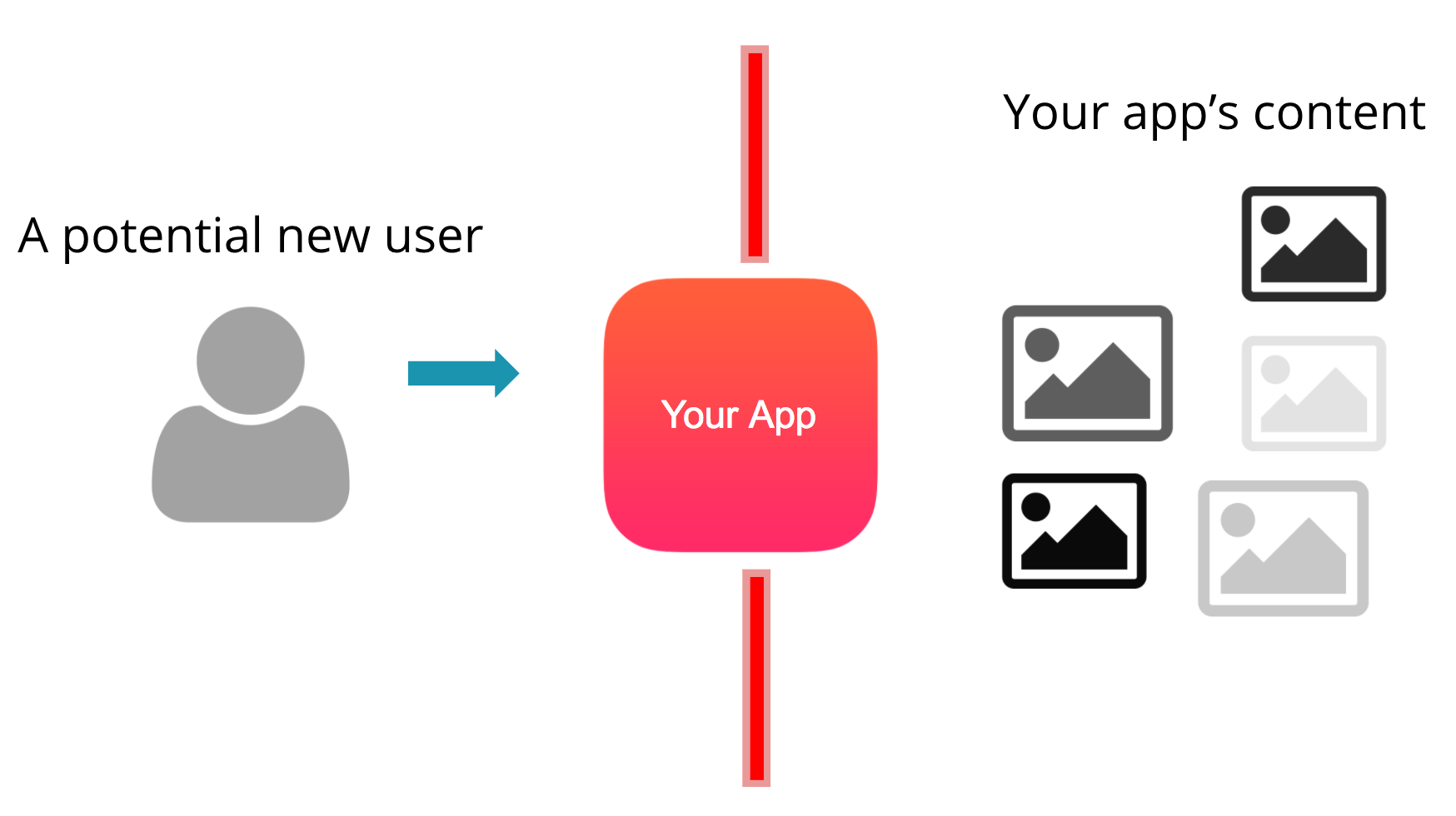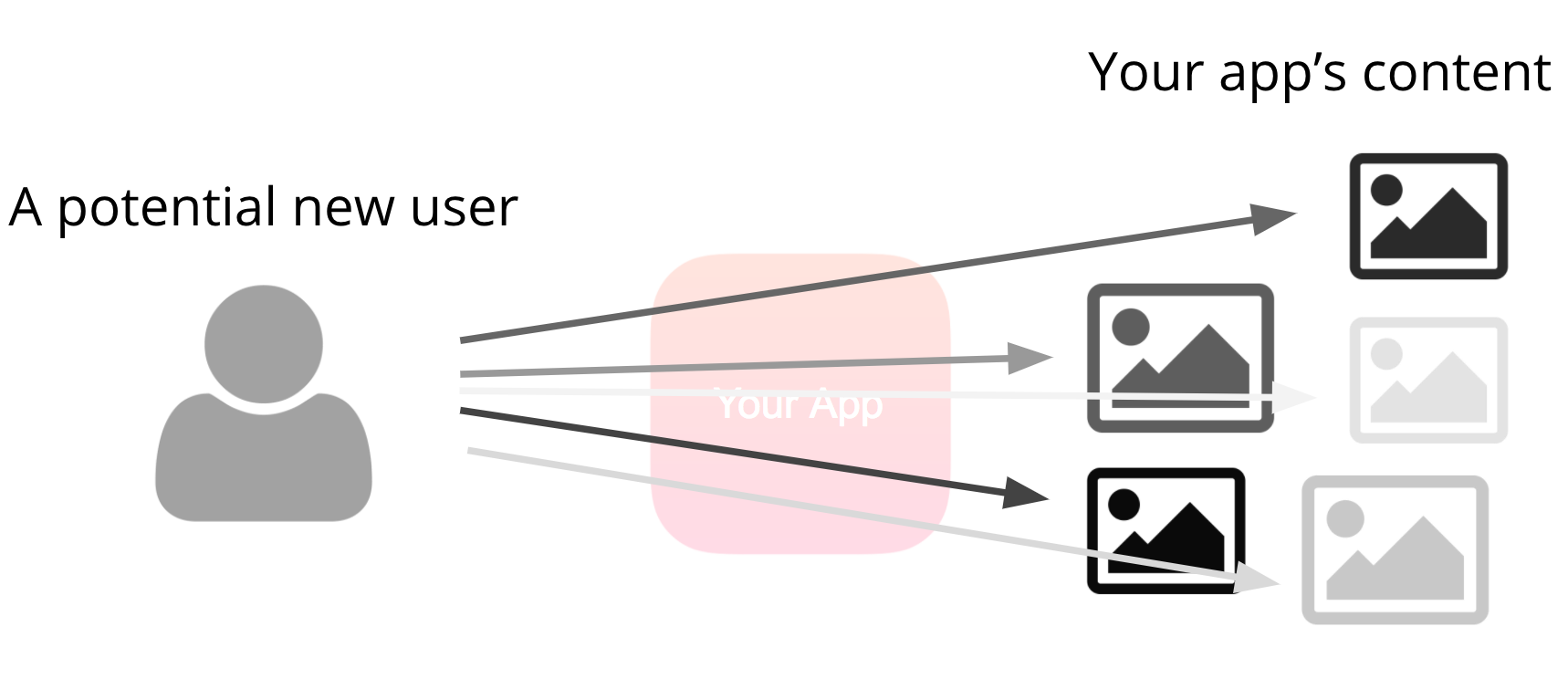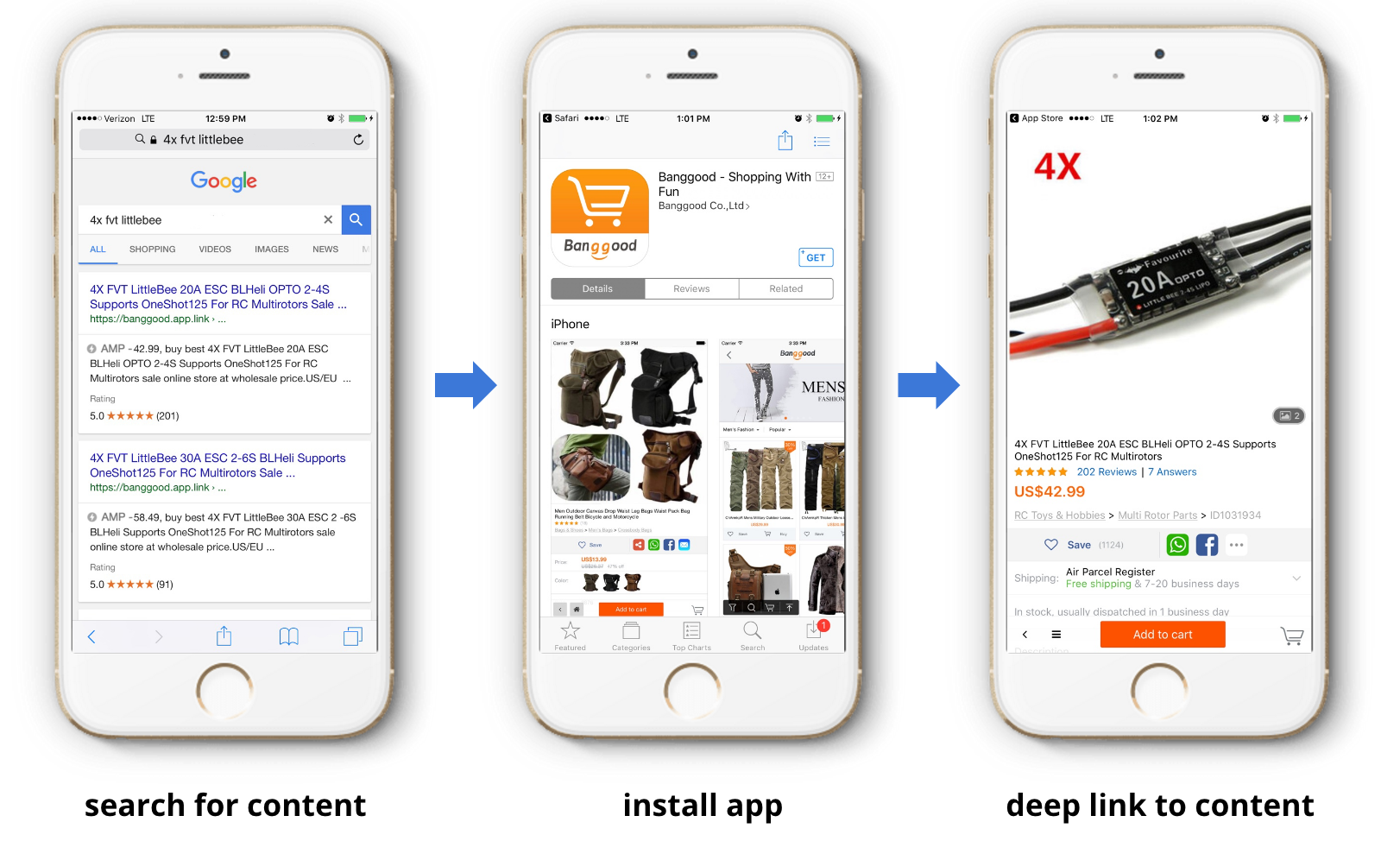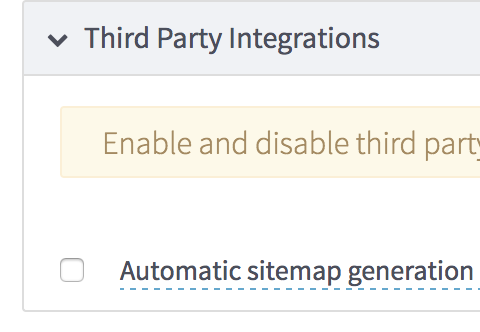We’re very excited to announce Branch AMP Deepviews, a new tool that enables app marketers and developers to grow and get their native apps discovered by leveraging web SEO and the latest AMP standards, which has never been possible before.
AMP Deepviews is the AMP-ified version of Branch Deepviews. Deepviews are web landing pages for users to preview the app content before they install the app. It provides a smoother download experience and has proven to increase click to install rate by 2x. AMP Deepviews creates these landing pages that fit the Google AMP standards, allowing you to benefit from the speedup that the AMP standard delivers. You can use the AMP version of Deepviews by leveraging the “branch_amp_default” template automatically included in the Deepviews section of the dashboard.
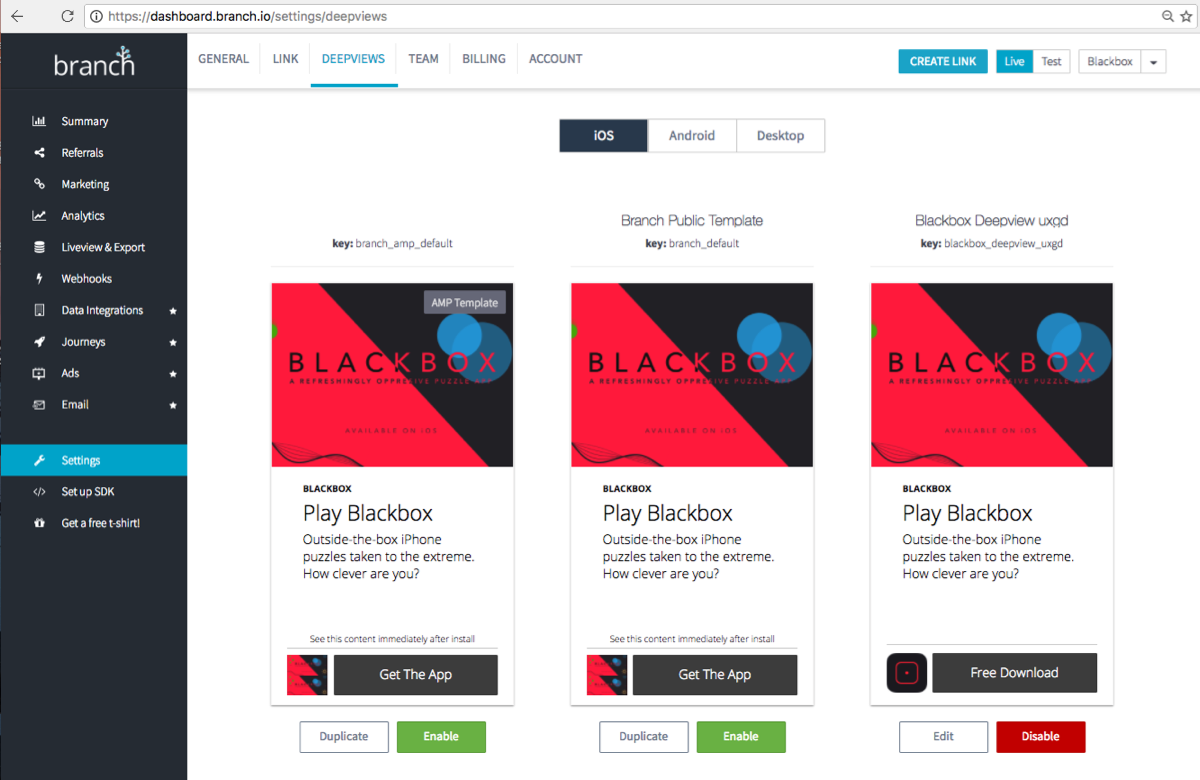
But that’s not all. From what I’ve observed, Google is giving preferential treatment to AMP pages in search, so we went ahead and rolled out the new Branch AMP Deepviews into the powerful app SEO platform that we have built for all app developers and marketers to help them unlock web search as a new channel for app discovery.
Now before I dive into the details, let’s take a look back at the app development evolution and what has caused the growth struggle faced by millions of mobile developers and marketers.
There has never been a simpler, more powerful platform for software engineers to build and deploy mobile applications. Native iOS and Android have fostered an incredible community of tutorials, sample code and development environments like Xcode and Android Studio. Combine these developer resources with the ease of deploying software to an application store that reaches billions of people around the globe, and you’ve got a recipe for a compelling software platform.
But because of its accessibility and power, native apps have proliferated and completely saturated the app stores to the point where it’s practically impossible to be discovered. Looking at the launch screen of the Apple App Store, you’ll see about 10 apps on display. Many of these are apps that have been live for years and are being featured repeatedly. Meanwhile, there are 15,000 new applications launching in the Apple App Store each week.
As an app developer myself, I was always envious of SEO (search engine optimization) that websites benefitted from. As a web developer, you could build a specific landing page filled with content, targeting a niche set of keywords that were being searched on Google or Bing, then start appearing near the top of the search results. This landing page could be tangentially related to your web app and you could build thousands of them to get as much niche search traffic as possible. All of these would reside on your web app and serve as different but productive channels of acquiring new users for your business.
This is very much a representation of the app discovery model that exists today:
Native apps could never leverage this tactic because there’s no way to index that content and drive app installs without building a website of your own. Google launched App Indexing a few years ago, but it requires you to build a website and their entire search index is still based on traditional website rankings. So, repeatedly, we’ve seen developers and savvy marketers who tried to use their App Indexing product but found that their content never appeared in search. This meant the only way it’d work is to actually build a website and grow it, then use that traffic to drive app installs.
The days of struggling with growth are over. With the new Branch AMP Deepviews and our app SEO platform, native apps can finally utilize and benefit from modern day web SEO tactics without having to build a web presence.
Here’s the model of what’s possible with our new app SEO platform:
First, let me explain a bit about how Branch works. When you use Branch, we start hosting your links on our servers. We give you a custom subdomain like yourapp.app.link. When a user clicks on your Branch links, we redirect them to the best place on mobile: your app or the App Store page about your app.
Now here’s how the system works:
-
- Branch dynamic deep links are created with all relevant content metadata for all your app “pages” through standard Branch usage (sharing is a good feature to get started with).
- Branch will automatically create a sitemap file with all of your relevant content hosted on your Branch domain (yourapp.app.link/sitemap.xml).
- A search robot (like Googlebot) will crawl the sitemap and find your Branch links.
- Branch sends back an AMP-enabled page with the content for indexing, so you get the boost that Google is giving AMP-enabled pages now.
- App page content starts appearing in search results without you needing to build a site.
With this system, you can enable the following user app discovery flow, where a new user finds your app entirely based on the pages within.
To help you get started, simply follow the basic, high-level steps listed below:
Step 1: Add the Branch SDK
You can drop the Branch library into your app in under a couple minutes. We support all major platforms and full instructions can be found on this page.
Step 2: Setup Deep Link Routing
Branch works by calling a deep link routing function every time the app opens up. This routing function is where you put your logic to open to the correct page in your app depending on what is passed through to you via the params dictionary. The general logic should be: if params contains a recognizable key (like product_id or image_id), launch the appropriate page to display the value present for that key. If there’s no recognizable key, that means the user didn’t click a link and they should be sent to the home page or the previous page they were browsing.
Step 3: Add Branch Link Sharing
This step is critical for Branch to correctly index your content to list on search portals with our hosted links. The sample code on how to do it is present in this section of the docs. The high-level concept is that you create a “Branch Universal Object” that contains all of the properties of your content: a title, a description, and an image url. This is how Branch knows what to display to the search robot.
Note, that is Branch doesn’t actually receive the data from the Branch Universal Object until you take an action on the object. We recommend that you outfit your app to use our share sheet, which will create a Branch link whenever a user goes to share. However, if you’re not interested in sharing your app content and want to populate the index as fast as possible, you can just register a view every time a user loads the page of that item. The code to register a view is quite simple.
Step 4: Enable App Indexing on the Branch Dashboard
Now that you’re creating Branch deep links, we can effectively start indexing your content for search providers. The last step is to opt in to this service we provide. Simply head to the Link Settings on the Branch dashboard and scroll to Third Party Integrations. Check the box that says “Automatic sitemap generation” as shown below:
Now that you’ve turned on the SEO trigger for your app content, check back in a day or so to see the results. You can observe what Google has crawled from your links by heading to the Branch Summary Page and scrolling down the bottom. Here’s an example of what you’d observe:
Partners who have turned on AMP Deepviews for their app are already seeing a boost in organic mobile search results and app download numbers.
We can’t wait to let more app marketers and developers benefit from this product and would love to hear your thoughts and feedback in the Comment section below!






















